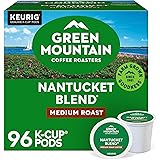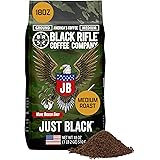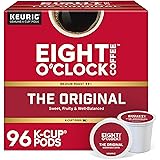Debunking the Myth: Why Boiling Water is Not Too Hot for Your Filter Coffee
For years, a persistent belief has circulated in coffee circles: using boiling water for brewing will “burn” your coffee, leading to a bitter, unpleasant taste. This notion is often encountered online, in various publications, and through word-of-mouth. However, as demonstrated in the accompanying video, the reality of optimal coffee brewing temperature, particularly for filter coffee, is far more nuanced than this common misconception suggests.
Consider that coffee beans undergo roasting at temperatures often exceeding 220°C (428°F). It is within this intense heat that the complex chemical reactions responsible for coffee’s distinctive aromas and flavors are initiated and developed. Given these extreme processing temperatures, the idea that 100°C (212°F) water could somehow “burn” or further roast the coffee lacks a clear scientific basis. The physical and chemical changes that define roasting are simply not replicated at typical brewing temperatures.
1. The Science of Extraction: Temperature and Solubility
At its core, coffee brewing is an extraction process, wherein water acts as a solvent to dissolve desirable compounds from ground coffee. There is an undeniable correlation between the temperature of the brewing water and the rate and efficiency of this extraction. Generally, hotter water provides more kinetic energy, which in turn facilitates quicker and more comprehensive dissolution of solubles from the coffee grounds.
Different flavor compounds are known to dissolve at varying rates and temperatures. For instance, some desirable acids and sugars are extracted more readily at higher temperatures, contributing to a vibrant and full-bodied cup. Conversely, if extraction is pushed too far, undesirable compounds, often associated with bitterness or astringency, can also be dissolved. This delicate balance is central to achieving an ideal brew, making an understanding of coffee brewing temperature critical.
2. Understanding Slurry Temperature: The True Brew Environment
A crucial distinction is often overlooked in discussions about brew temperature: the difference between the water temperature in the kettle and the actual temperature of the coffee “slurry.” The slurry is defined as the mixture of ground coffee and water within the brewing vessel. This is the true environment where extraction occurs, and its temperature is the most significant factor affecting the final taste.
As demonstrated in the video, even when water is poured directly off the boil (100°C), the slurry temperature rarely reaches that initial kettle temperature. This phenomenon is attributable to several factors:
- Heat Transfer: Heat is immediately lost to the brewing equipment (e.g., cone, carafe), which is often cooler than the boiling water.
- Thermal Mass of Coffee Grounds: The cold or room-temperature coffee grounds absorb a significant amount of heat from the initial water, lowering the overall slurry temperature.
- Environmental Factors: Ambient room temperature and the open nature of many filter brewing methods allow heat to dissipate into the air.
- Evaporative Cooling: As steam rises from the brewing slurry, it carries away heat energy, further reducing the temperature of the coffee-water mixture.
Experiments shown in the video reveal that, even with a preheated plastic pour-over cone and a kettle capped at 98°C, the slurry temperature barely exceeded 91°C. It was suggested that even if 100°C water were used, the slurry might not surpass 93°C. This illustrates that reaching exceptionally high temperatures within the slurry itself is considerably more challenging than typically assumed.
3. Pour-Over Versus French Press: Thermal Dynamics in Action
The method of brewing significantly influences how slurry temperature is maintained. Pour-over brewing, characterized by a continuous, slow delivery of water and often smaller thermal mass, presents unique challenges:
- Continuous Heat Loss: Each fresh pour of water introduces more heat, but also more surface area for evaporative cooling and contact with cooler brewer walls.
- Smaller Thermal Mass: The overall volume of coffee and water in contact at any given moment can be relatively small, leading to quicker temperature fluctuations.
- Intermittent Contact: The brewing cycle involves periods of blooming and pouring, during which temperatures can drop.
Conversely, methods like the French press, where the entire volume of water is added at once, offer a more stable thermal environment. While an un-preheated French press will still cool the water rapidly upon initial contact, preheating the vessel can help maintain a slightly higher, more consistent slurry temperature. Even with aggressive preheating, however, achieving slurry temperatures near boiling remains difficult, primarily due to the heat absorption by the coffee grounds themselves.
4. Optimizing Temperature for Different Roast Profiles
The “burning” myth may have originated from experiences with very dark roasted coffees. When intensely dark roasts are brewed with very hot water, certain bitter, ashy, or smoky-tasting compounds, already present due to the extensive roasting process, may be extracted more aggressively. This can lead to a perception of a “burnt” taste, not because the water is further roasting the coffee, but because it is efficiently extracting compounds that contribute to such flavors.
For most specialty coffee, especially light and medium roasts, the consensus among experts is to use the hottest possible water. This approach is generally recommended to ensure sufficient extraction of the desirable acids, sugars, and aromatic compounds that give these coffees their complexity and brightness. Underextraction, often a result of insufficient brewing temperature, can lead to sour, thin, and underdeveloped flavors.
However, if one consistently experiences bitter, burnt, or harsh tastes, particularly with darker roasts, it can be beneficial to slightly reduce the brewing temperature. Aiming for slurry temperatures in the mid-to-high 80s Celsius (around 85-90°C) may result in a smoother, less bitter cup while still achieving ample extraction. This careful adjustment allows for the tailoring of the brewing process to the specific characteristics of the coffee being used, enhancing its unique flavor profile.
5. Practical Takeaways for Your Brewing Routine
Understanding these principles can significantly elevate your home coffee brewing. Instead of fearing boiling water, the focus should be on achieving and maintaining an optimal slurry temperature for the desired extraction. Here are some practical tips:
- Preheat Everything: Always preheat your brewing device, whether it’s a pour-over cone, French press, or mug. This minimizes heat loss from your brewing water.
- Use a Thermometer: While not strictly necessary for every brew, occasionally monitoring your slurry temperature with a probe thermometer can provide valuable insights into your setup’s thermal dynamics.
- Brew Immediately After Boil: For light to medium roasts, pouring water as soon as it comes off the boil is often recommended to maximize initial heat energy.
- Adjust for Roast Level: Experiment with slightly lower temperatures (e.g., waiting 30-60 seconds off boil) for very dark roasts if bitterness is an issue.
- Consider Equipment: Dual-walled stainless steel brewers retain heat more effectively than single-walled ceramic or plastic.
Ultimately, achieving excellent filter coffee is a journey of exploration and fine-tuning. The belief that brewing coffee with boiling water will “burn” it is largely unfounded when considering the actual slurry temperature during extraction. By understanding the role of temperature in dissolving flavor compounds and the thermal dynamics of your brewing setup, home baristas can confidently approach their brewing with precision, leading to consistently delicious results.







